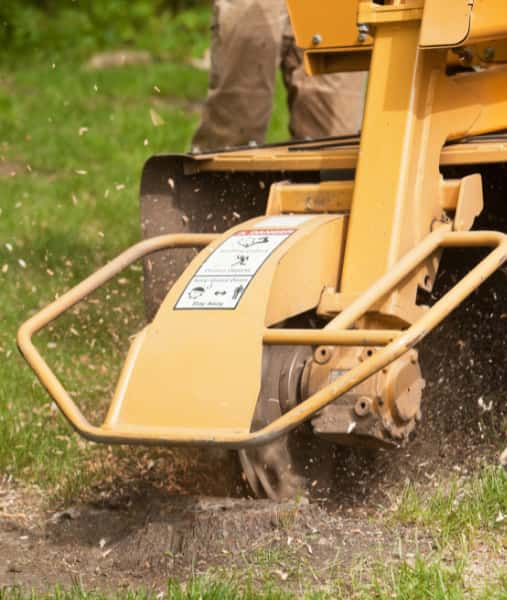Cracks in trees are more than just surface blemishes — they are often early warning signs that a tree is under stress or suffering from structural weakness. Left unchecked, these cracks can develop into serious hazards, threatening property, safety, and the long-term health of the tree itself. Understanding when a crack becomes a cause for concern is essential for every property owner. Worlingworth Tree Surgeons provides expert tree inspection and surgical services across Worlingworth, Suffolk, helping homeowners identify and address these issues before they worsen.
Why Do Cracks Form in Trees?
Tree cracks can develop for a range of reasons, often linked to environmental stress, poor growth patterns, or physical injury. Recognising what causes these cracks helps determine how serious the problem may be.
Common causes include:
- Rapid temperature changes: Sudden freezes or thaws can cause bark and wood to expand or contract unevenly, leading to splits.
- Wind or storm damage: High winds can cause twisting or bending that results in cracks, especially in older or top-heavy trees.
- Heavy branch weight: Overextended limbs place stress on the trunk or joints, eventually leading to fissures.
- Growth defects: Weak branch attachments or co-dominant stems (two trunks growing together) can create internal stress points.
- Decay or disease: Fungal infections or rot within the wood reduce strength, causing cracks to appear more easily.
Each of these issues affects a tree differently, but all have one thing in common — they weaken the structure over time.
Types of Tree Cracks and What They Indicate
Not all cracks are equally severe, but even small ones can progress quickly if ignored.
1. Vertical Cracks
These are the most common and usually run along the length of the trunk. They can be shallow (confined to the bark) or deep, extending into the wood. Deep vertical cracks are serious, as they compromise the tree’s internal strength and stability.
2. Horizontal or Spiral Cracks
These cracks often result from twisting forces caused by wind or mechanical strain. They can indicate significant structural weakness and should be inspected immediately by professionals such as Worlingworth Tree Surgeons.
3. Frost Cracks
Frost cracks form when cold weather causes the outer bark to contract faster than the inner wood, leading to a sharp split sound during freezing conditions. Although these may appear minor at first, they can reopen each winter and allow decay organisms to enter.
4. Splits at Branch Unions
When two or more large branches grow from the same point, internal pressure can cause splitting at the joint. These cracks often occur in mature trees and are among the most hazardous because they can lead to sudden limb failure.
Warning Signs That Require Immediate Attention
While not every crack means a tree must be removed, some signs suggest that professional tree surgery is urgently required.
Signs of serious structural risk:
- Cracks that extend deep into the trunk or through multiple limbs.
- Large cavities or visible decay around the crack.
- Oozing sap, fungus, or sawdust-like residue from the opening.
- Noticeable leaning of the tree or movement during wind.
- Dead or dying branches above or near the crack.
If you spot any of these symptoms on your property, contact Worlingworth Tree Surgeons in Worlingworth, Suffolk, for a thorough assessment before the damage escalates.
Why Cracks Are Dangerous if Ignored
Cracks don’t heal in the traditional sense — trees compartmentalise damage by forming new growth around it. However, if decay has already started or if the crack continues to expand, the tree may not be able to contain the damage.
Potential dangers include:
- Falling limbs or trunk failure: Structural weakness increases the likelihood of breakage, especially in windy conditions.
- Internal rot: Open cracks provide entry points for fungi, insects, and bacteria that accelerate decay.
- Water ingress: Moisture trapped inside the split worsens deterioration.
- Reduced stability: Large cracks can alter the tree’s weight distribution, causing it to lean or uproot.
Professional intervention ensures these problems are properly managed before they pose a risk to safety or surrounding property.
How Professional Tree Surgery Addresses Cracked Trees
Tree surgeons are trained to assess and stabilise trees showing signs of structural distress. At Worlingworth Tree Surgeons, each situation is evaluated individually to determine whether a tree can be saved through corrective work or if partial removal is required.
Common professional techniques include:
- Crown reduction: Reduces wind resistance and branch weight, relieving pressure on the damaged area.
- Cabling and bracing: Installing support systems to hold weakened sections together and prevent further splitting.
- Selective pruning: Removing heavy or unstable limbs to improve balance and reduce strain.
- Decay management: Removing infected wood and sealing exposed areas to prevent disease spread.
- Tree removal (if necessary): In cases where structural failure is inevitable, safe removal prevents accidents or property damage.
These interventions, when carried out by experienced specialists, extend the lifespan of affected trees and restore safety to outdoor spaces.
Preventing Cracks Through Regular Maintenance
Preventing cracks is far easier and safer than repairing them after they develop. Proactive tree care reduces the risk of damage from storms, decay, or imbalance.
Preventative maintenance tips:
- Regular inspections: Have trees checked annually, especially after extreme weather.
- Proper pruning: Ensure even weight distribution and remove crossing or competing branches.
- Mulching and soil care: Maintain soil health to promote strong root systems and reduce stress.
- Monitor for pests and diseases: Early treatment prevents internal decay that weakens structure.
Worlingworth Tree Surgeons provides ongoing maintenance plans for trees in Worlingworth, Suffolk, helping homeowners preserve their natural assets safely and effectively.
When to Call a Professional Tree Surgeon
Homeowners should contact a qualified tree surgeon as soon as they notice cracks that appear deep, wide, or associated with other symptoms like leaning, oozing sap, or decaying wood. Attempting to treat large cracks without the proper tools and expertise can make the issue worse or create unnecessary safety risks.
Professional assessment determines whether the crack is superficial or a sign of deeper instability. Specialists like Worlingworth Tree Surgeons use diagnostic techniques such as visual inspections, decay detection tools, and structural analysis to create the safest and most effective solution.
The Value of Professional Expertise
Tree surgery is not only about removing branches — it’s about understanding how trees respond to stress, injury, and environmental change. By choosing experts like Worlingworth Tree Surgeons, property owners in Worlingworth, Suffolk, gain access to skilled professionals who can assess, treat, and restore trees in a way that balances safety with preservation.
Conclusion
Cracks in trees should never be ignored. They may seem harmless at first, but they often indicate deeper structural issues that can compromise the safety and health of your trees. Early intervention from a professional tree surgeon can prevent damage, prolong the tree’s life, and maintain a safe environment around your property.
Worlingworth Tree Surgeons provides comprehensive tree surgery and inspection services throughout Worlingworth, Suffolk, ensuring that any signs of cracking or weakness are dealt with quickly and effectively. Through expert care and attention, even damaged trees can continue to thrive for many years to come.
Call us on: 01728 448 695
Click here to find out more about Worlingworth Tree Surgeons
Click here to complete our contact form and see how we can help with your tree needs.

